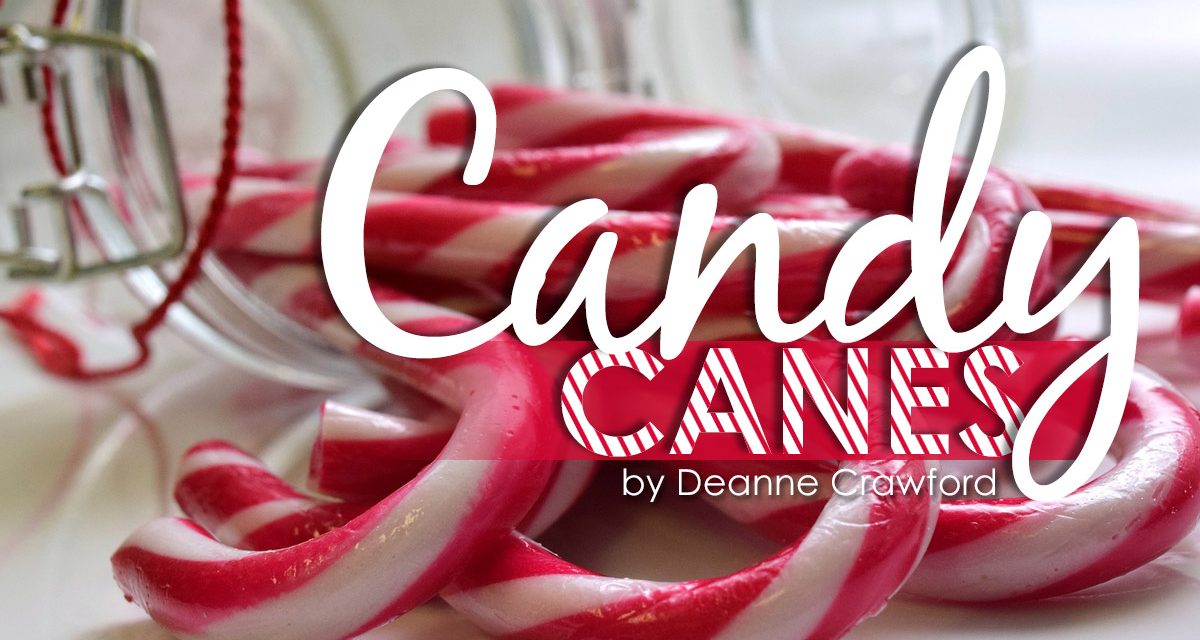Nothing says Christmas more than the iconic candy cane. This simple, delectable sugar stick is the number one non-chocolate candy sold between Thanksgiving and New Year’s Day. Wildly, it has been estimated that Brach’s Candy company makes 500 million candy canes each year, and Spangler makes 2.5 million candy canes per day and produces 45% of the candy canes sold in the United States. What makes the candy cane so special that it is nationally celebrated on December 26th? Grab a peppermint stick and join me in our December unit study to celebrate America’s favorite peppermint candy!
Our candy cane story begins about 350 years ago at the Cologne Cathedral in Germany. It has been suggested that a choirmaster handed the young singers sugar sticks to keep them quiet during the long Living Creche (nativity). Reportedly, he bent the candies into a hook shape to emulate the shepherd’s crook. Over the years, the candy cane legend has grown. Check out these various stories: The Candymaker’s Gift, Why Christmas Customs-Candy Canes? Eternal Perspective Ministries Story of the Candy Cane, and Spangler Candy Candy Cane History and Legends. However, it was not until the mid 1800s that the candy cane was introduced in the United States, when August Imgard celebrated Christmas by decorating a blue spruce with paper ornaments and candy canes, and the candy cane tradition rapidly spread.
Originally sold as a straight white peppermint stick, today’s beloved candy cane is available in a vast array of flavors–including some unusual ones like macaroni and cheese, ketchup, and even hot dog flavor! Sounds like a child’s favorite lunch. Learn about other unusual flavors here and talk with your children about a candy cane flavor they would like to try. Encourage them to imagine other yummy flavors for candy canes and suggest that they create a compelling commercial that convinces siblings (or cousins) to try their special flavor.
How do you like to eat a candy cane? Straight end or curved end first? Or does it taste better to break it into pieces and eat the pieces? Research by the National Candy Association discovered that 55% of people start with the straight end of the candy cane, while 28% choose to eat the curved end first. The rest, the remaining 17% of people, break their candy cane into pieces before eating it! Just for fun, try to eat a candy cane differently than you normally eat them. Did you discover a fun, new way to eat your candy cane?
Earlier, I shared that the Spangler Candy Company makes roughly 2.5 million candy canes each day during the holiday season. It takes a very warm environment (about 100 degrees!), dedicated workers, and specialized equipment to meet this demand. Take time to watch the Food Network’s Unwrapped Spangler Candy Canes to watch the action. It was not, however, until the 1950s that candy canes were mass produced by machine. Prior to this time, candy canes were made by hand in small batches. While it is difficult to find hand made candy canes, Disneyland still offers hand-pulled candy canes. Watch this Disney Parks video to learn more.
Just for fun, lets talk about the key ingredients found in the peppermint candy cane. Perhaps your family will even be motivated to make candy canes at home! First, is sugar or sucrose. It is common to hear how bad sugar is for us, and it is true that excessive amounts of sugar can cause health problems, like obesity and heart problems. However, if you are not diagnosed with a medical issue like diabetes, studies show that moderate amounts of sugar can be beneficial and does not necessarily cause behavior problems in children. Exploratorium offers great information for kids about sugar, while younger ones may enjoy this Sci for Kids video. The next key ingredient is corn syrup, a sweetener that is frequently used in sweetened drinks, candy, breads, fast food, and even medication. It is a popular ingredient because along with sweetening food, it also thickens food and helps it stay moist. Learn more about corn syrup here. Other ingredients include peppermint extract or oil and food coloring. As interest and time permits, research food dyes in order to determine their possible impact on behavior.
As our fun mini unit study ends, take time to do candy cane activities together. These will make wonderful add-on gifts for the grandparents or even siblings. Here are a couple links to inspire your creativity. Teaching Expertise Classroom Ideas and Candy Cane crystals. I also encourage you to celebrate National Candy Cane Day on December 26th. This is also a perfect time to use some of those candy canes in fabulous and fun recipes like Holiday Chocolate Pancakes with crushed candy canes, or any of the other delicious holiday recipes from Brach’s Candy. Or check out this seasonal take on the popular Snowball (Russian Tea Cookie or Mexican Wedding Cakes) cookie. As a family who is always on the hunt for a new holiday cookie recipe, we will definitely be trying this one!
I hope this mini study has been fun for your family.
Merry Christmas,
From Deanne and all of us here at Rainbow Resource Center





